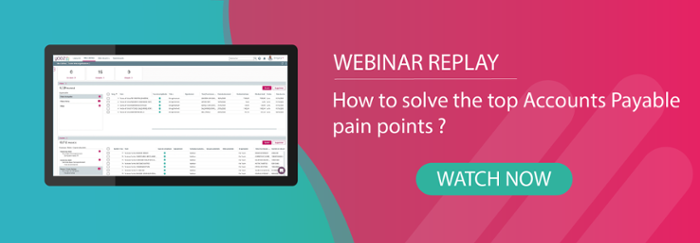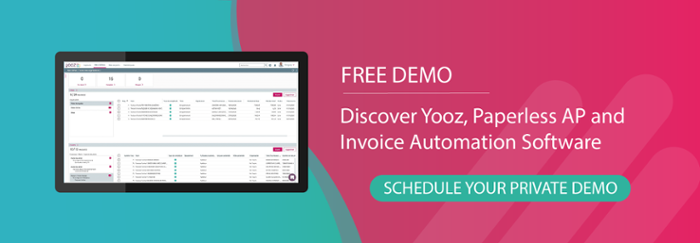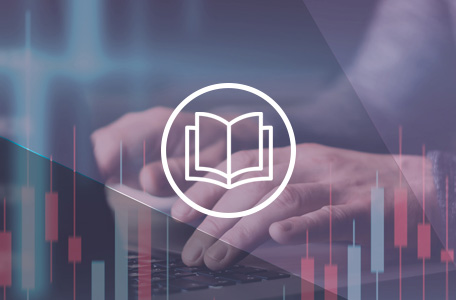Why do companies still struggle with the AP process despite advancements in technology? Many AP departments continue to grapple with fragmented solutions in accounting and accounts payable automation, resulting in significant gaps between theoretical capabilities and practical realities. However, Accounts Payable automation presents a transformative solution, offering the promise of restructuring financial workflows and optimising performance and agility throughout AP processes.
Definition of an end-to-end AP automation
End-to-end accounts payable automation represents an approach to streamlining and optimising the entire AP process from start to finish. This solution encompasses the automation of key tasks and workflows involved in AP management, including invoice receipt, data extraction, validation, approval routing, payment processing and reconciliation.
By leveraging advanced technologies such as optical character recognition, machine learning, and robotic process automation, end-to-end AP automation aims to eliminate manual intervention, reduce errors, enhance efficiency, and improve visibility across the entire AP lifecycle.
In essence, automated accounts payable process represents a paradigm shift in how organisations approach AP management, offering a holistic and scalable solution to address the complexities and challenges inherent in modern finance operations.
Time for change: challenges of manual accounts payable processes
The reliance on manual data entry, paper-based documentation, and inefficient approval workflows creates a myriad of obstacles that hinder productivity, accuracy, and agility within the AP department. The Third Annual 2023 State of Automation in Finance Report, surveying over 1,500 financial decision-makers across 9 countries, sheds light on critical statistics underscoring the urgency for accounts payable automation:
-
41% of respondents cite manual AP processes as excessively time-consuming.
-
31% acknowledge past errors made in manual processing, highlighting inherent risks.
-
29% express frustration with the complexity of manual AP workflows, hindering efficiency.
-
Another 29% report challenges in timely payments to vendors and suppliers, risking relationships and incurring penalties.
These findings reflect the tangible pain points experienced by finance leaders, emphasising the need for a paradigm shift in AP management. From the labour-intensive nature of manual data entry to the risks of errors, delays, and compliance issues, manual tasks stifle productivity and compromise accuracy.
Furthermore, the lack of visibility and control limits informed decision-making and strategic planning. As companies strive for efficiency and competitiveness, the time has come to confront the challenges of manual AP processes and embrace automation as the catalyst for inevitable change.
How automation overcome those challenges: Benefits of an end-to-end AP automation solution
Embracing automation presents a compelling solution to overcome the challenges inherent in manual accounts payable processes. The benefits of implementing an automated AP process solution are multifaceted:
Reduced error rates and late payments
The manual approach not only drains valuable time and resources but also diminishes operational efficiency and escalates expenses. Rectifying issues such as duplicate payments, lost invoice data, and delayed reimbursements places strain on supplier relations and team morale, leaving employees and leaders alike frustrated with the inefficiencies.
Moreover, delaying supplier payments jeopardises business relationships and undermines operational stability. The transition to automated supplier processes presents a solution by lessening errors, enhancing efficiency, and liberating employees for strategic endeavours.
Automated data capture, workflow automation, and invoice validation lessen manual errors and ensure prompt invoice processing. Integration with ERP systems synchronises financial data in real-time, reducing discrepancies. Analytics and reporting capabilities offer insights into payment trends, enabling organisations to optimise processes and minimise errors over time.

Enhanced supplier relationships
Inefficient accounts payable processes can strain vendor relationships and hinder business operations. Manual invoice processing often leads to delays, errors, and discrepancies, causing frustration for both supplier and internal teams. Moreover, the lack of visibility and control over the AP lifecycle can result in missed payment deadlines and damaged supplier relations.
Automated accounts payable process presents a transformative solution to these challenges. By automating invoice receipt, data extraction, validation, approval routing, and payment processing, AP department streamline their AP workflows, paring down the risk of errors and delays. With automated reminders and notifications, AP automation ensures timely payments, enhancing vendor satisfaction and maintaining positive relationships.
Streamlined workflow and faster processing times
The traditional approach to invoice management, characterised by manual data entry, paper-based documentation, and manual approval routing, introduces unnecessary delays and bottlenecks into the AP lifecycle. Therefore, companies face challenges in meeting payment deadlines.
AP automation transforms the AP workflow by streamlining processes and accelerating processing times. With invoice receipt automation, data extraction, and approval routing, AP automation eliminates manual intervention and reduces processing bottlenecks. With automated workflows and real-time visibility into invoice status, finance services can expedite the approval process, curtail delays, and ensure timely payments to vendors and suppliers.
Furthermore, AP automation enhances operational efficiency by centralising document management, facilitating seamless collaboration among stakeholders, and providing actionable insights into AP performance metrics.
Cost savings and improved cash management
AP automation emerges as a critical tool for businesses seeking to improve their operations and achieve significant cost savings while enhancing cash management. By automating tasks spanning from current statuses to closed and paid invoices, AP automation slashes the time spent tracking invoices, allowing teams to focus on delivering value-added tasks.
Modern AP automation platforms empower teams by automating routine tasks such as data entry and invoice processing, enabling them to focus on activities that promote innovation and growth. The cost-saving advantages of AP automation extend beyond operational efficiencies.
Studies reveal that AP automation yields substantial savings, with costs per invoice reduced by over £10.47 and processing and approval workflows halved. Additionally, digitising client and supplier documents proves to be 80% more cost-effective than traditional paper processing. These statistics underscore the importance of embracing AP automation to achieve heightened productivity and efficiency while reducing operational costs, a goal every business strives to attain.

Improved visibility and reporting
In addition to optimising AP operations, integrated dashboards within AP systems offer teams transparent visibility into the payment cycle. These dashboards not only showcase the status and stakeholders responsible for pending invoices but also provide analytical insights into invoice and payment processing performance, predictive expenditure tools, payment configurations, and a plethora of real-time data.
This functionality empowers AP teams and the wider business to make strategic, data-informed decisions grounded in patterns and trends. Essentially, it enables them to boost the invoicing process for peak efficiency. By leveraging the insights provided by these dashboards, financial offices can identify areas for improvement and allocate resources more effectively. It drives greater efficiency and productivity across the AP lifecycle.
Scalability and adaptability
Scalability and adaptability are paramount considerations for businesses seeking to implement AP automation solutions. As companies evolve, their AP needs must scale accordingly to accommodate increasing transaction volumes, expanding supplier networks, and evolving regulatory requirements.
Automated AP process solutions offer the scalability and adaptability necessary to meet the dynamic needs of modern businesses. These solutions are designed to seamlessly integrate with existing ERP systems and accounting software, ensuring compatibility and interoperability across diverse platforms and databases.
Moreover, they are built to accommodate fluctuations in transaction volumes and adapt to changes in business processes and regulations without disrupting operations.
The scalability of AP automation enables companies to scale their AP processes in line with business growth, without the need for costly infrastructure upgrades or extensive customisation. Additionally, the adaptability of these solutions allows companies to respond quickly to changing market conditions, regulatory mandates, and business priorities, ensuring agility and resilience in the face of uncertainty.
Increased employee productivity and focus on strategic initiatives
Manual data capture, invoice categorisation, and routing processes are prone to errors, information loss, and mismanagement, imposing significant challenges on accounts payable (AP) operations. However, accounts payable automation serves as an ideal solution by streamlining daily operations and eliminating redundant administrative tasks.
By automating these tasks, accounts payable automation frees up valuable staff time that can be redirected towards strategic initiatives and value-added activities. Employees can focus on analysing accounting data, identifying cost-saving opportunities, and driving process improvements rather than being bogged down by repetitive administrative tasks.
Improved regulatory compliance and risk mitigation
End-to-end AP automation solutions offer robust features and functionalities designed to enhance regulatory compliance and mitigate risks. These solutions incorporate built-in compliance controls, audit trails, and authorisation protocols to ensure adherence to regulatory standards such as SOX. By automating compliance monitoring and enforcement processes, companies can reduce the risk of errors, omissions, and unauthorised access to sensitive financial data.
Furthermore, AP automation solutions provide real-time visibility into accounts payable processes and transactions, enabling financial departments to identify and address compliance issues proactively.

Enhanced audit trails and documentation management
Enhanced audit trails and documentation management are integral components of effective accounts payable (AP) operations, ensuring transparency, accountability, and compliance with regulatory requirements. Traditional end-to-end processes often lack robust mechanisms for tracking and documenting transactional activities, making it challenging for AP departments to maintain accurate records and facilitate audits.
Automated account solutions offer advanced features and functionalities to address these challenges and enhance audit trails and documentation management. These solutions capture and store detailed transactional data throughout the AP lifecycle, including invoice receipt, approval routing, payment processing, and reconciliation. By maintaining comprehensive audit trails, organisations can track the history of each transaction, monitor changes, and identify potential discrepancies or anomalies.
Furthermore, an automated accounting system streamline documentation management by centralising document storage, retrieval, and archival processes. Digital document repositories enable stakeholders to access and retrieve invoices, purchase orders, and payment records quickly and easily. It decreases the reliance on paper-based documentation and diminishing the risk of loss or damage.
Paperless sustainability
Traditional accounting processes, reliant on paper-based documentation and manual workflows, contribute to significant paper waste, carbon emissions, and environmental impact.
AP automation solutions offer a sustainable alternative by facilitating paperless AP operations. By digitising invoice processing, approval workflows, and payment transactions, companies reduce their reliance on paper, curtail waste generation, and lower their carbon footprint. Digital document management systems streamline the storage, retrieval, and archival of electronic documents, eliminating the need for physical filing cabinets and paper-based record-keeping.

Competitive advantage and business agility
Achieving a competitive advantage and fostering business agility are key objectives for companies striving to thrive in today's dynamic marketplace. End-to-end accounts payable (AP) automation solutions play a pivotal role in helping companies achieve these goals by streamlining operations, enhancing efficiency, and enabling faster decision-making.
Businesses gain a competitive edge by cutting down processing times, improving accuracy, and optimising resource allocation with AP automation processes. This agility in AP operations enables them to respond quickly to changing market conditions, capitalise on opportunities, and stay ahead of the competition.
Moreover, AP automation empowers companies to scale their operations efficiently, accommodate growth, and expand into new markets with confidence. By eliminating manual inefficiencies and streamlining workflows, businesses can redirect resources towards innovation, customer service, and value-added activities, driving sustainable growth and long-term success.
Seeking the best practices for implementing end-to-end AP automation?
Implementing automated accounts payable process requires careful planning, strategic execution, and a commitment to continuous improvement. From conducting a need assessment to selecting the right automation, there are several key best practices to consider.
Conduct a comprehensive need assessment
Begin by evaluating your current AP processes, identifying pain points, and assessing areas for improvement. Engage stakeholders from finance, procurement, and IT departments to gather insights into workflow inefficiencies, compliance requirements, and system integration needs.
Consider factors such as transaction volumes, types of invoices, regulatory compliance, and scalability requirements. By understanding your business’ unique AP challenges and objectives, you can tailor your automation strategy to address specific needs and increase the benefits of automated accounts payable implementation.

Select the right AP automation solution
Choosing the appropriate AP process solution is pivotal for the success of your automation endeavour. There are specific elements you should look for:
Invoice processing automation
Invoice processing automation, driven by advanced AI technologies, transforms traditional workflows with enhanced efficiency and precision. AI, particularly machine learning and optical character recognition (OCR), automates tasks prone to errors.
Machine learning algorithms adapt to extract data accurately from invoices, reducing manual tasks and errors and expediting processing times. OCR technology intelligently captures text and data from scanned or photographed invoices, ensuring precise data entry.
Moreover, AI-driven automation streamlines invoice categorisation, routing, and approval workflows by dynamically adjusting processes based on historical data and user behaviours. In essence, AI technologies optimise AP processes, offering businesses improved efficiency and accuracy in invoice processing.
User experience and training
Prioritise solutions that offer intuitive interfaces, simplified workflows, and user-friendly design to enhance user adoption and efficiency.
Investing in thorough training programs ensures that employees understand the functionalities of the automation system and can effectively leverage its features to streamline AP processes.
Integration capabilities with existing systems
All companies need a solution that offer seamless integration with your company's existing ERP, accounting software, and other systems. Effective integration ensures data consistency, eliminates duplicate data entry, and facilitates real-time data exchange between different systems. This streamlines workflows, enhances accuracy, and improves overall operational efficiency.
Look for solutions that offer flexible integration options, including APIs, connectors, and pre-built integrations with popular ERP systems. Assess the ease of integration and compatibility with your company's technology stack to minimise implementation challenges and maximise ROI.

Customisation and flexibility
Those are key considerations when implementing accounts payable process solutions. Search for solutions that offer customisable workflows, templates, and user interfaces to adapt to your business’ unique processes and requirements.
Flexibility in configuration allows you to tailor the automation solution to match your organisation's specific needs, preferences, and industry regulations. This ensures that the solution aligns closely with your existing workflows and can accommodate changes and updates as your business evolves.
Collaboration real-time information with the ecosystem
Effective collaboration features enable stakeholders to access real-time information, track invoice statuses, and communicate efficiently within the platform. Look for platforms that facilitate seamless communication and collaboration between internal stakeholders, vendors, and other external partners.
It fosters transparency, accountability, and streamlined decision-making across the AP lifecycle. Furthermore, integration capabilities with vendor portals and third-party systems enable automated communication and data exchange, reducing manual intervention and accelerating transaction processing.
Scalability and performance
Choose a platform that can seamlessly scale to accommodate growing transaction volumes, users, and business needs. Scalability ensures that the automation solution can handle increased workload demands without sacrificing performance or reliability. The chosen solution must offer flexible deployment options, such as cloud-based architectures, which can dynamically allocate resources based on demand.
Performance is equally important, as it directly impacts the speed and efficiency of an AP process. Assess the solution's ability to process invoices, route approvals, and generate reports in a timely manner, even during peak periods.

Security and compliance standard
An ideal solution disposes of a robust data encryption, access controls, and audit trails to protect confidential information from unauthorised access, data breaches, and cyber threats. Ensure that the solution complies with relevant regulations depending on your industry and geographic location.
Prioritise the one that adheres to industry-leading security protocols and regulatory requirements to safeguard sensitive financial data and mitigate compliance risks.
Furthermore, assess the solution provider's track record in security and compliance, including certifications, audits, and adherence to best practices. Verify that the solution undergoes regular security assessments and updates to address emerging threats and vulnerabilities.
Vendor reputation and support services
Choose a vendor with a strong track record of reliability, expertise, and customer satisfaction in the automated accounts payable space. Review customer testimonials, case studies, and industry reports. Look for evidence of successful implementations, long-term partnerships, and positive feedback from clients like your organisation.
Evaluate the vendor's support services, including implementation assistance, training programs, and ongoing technical support. Ensure that the vendor offers comprehensive support resources, including dedicated account managers, help desk support, and online knowledge bases.
Additionally, consider factors such as the vendor's financial stability, scalability, and commitment to innovation. Choose a vendor that invests in research and development to continuously improve their product offerings and adapt to evolving customer needs and market trends.
Mobile accessibility and remote work capabilities
In today's increasingly mobile and distributed work environments, mobile accessibility and remote work capabilities are essential features of modern accounting systems solutions. Look for a solution that offer mobile applications or web-based interfaces that enable users to access AP functionalities from anywhere, at any time, using their mobile devices or tablets.
Mobile accessibility allows approvers, finance teams, and other stakeholders to review and approve invoices, track payment statuses, and access important documents while on the go. This flexibility enhances collaboration, accelerates decision-making, and ensures timely invoice processing, even when users are working remotely or traveling.
Furthermore, remote work capabilities enable companies to maintain business continuity and productivity during disruptions such as office closures, travel restrictions, or natural disasters. By providing remote access to AP process tools, businesses can empower their teams to stay connected, productive, and responsive to business needs, regardless of their physical location.

Advanced analytics and reporting features
Features such as data visualisation tools, tailored dashboards, and predictive analytics algorithms enable organisations to gain valuable insights into their automation software. We can count as well identify trends and make data-driven decisions to optimise performance and mitigate risks.
With customisable dashboards, stakeholders can monitor key performance indicators (KPIs), track invoice processing times, and identify bottlenecks or inefficiencies in real-time.
Furthermore, predictive analytics algorithms can forecast cash flow trends, predict payment behaviour, and identify potential fraud or compliance issues before they escalate. By leveraging advanced analytics, businesses can proactively address challenges, capitalise on opportunities, and drive continuous improvement in their AP operations.
Additionally, robust reporting capabilities enable companies to generate comprehensive reports, audit trails, and compliance documentation to meet regulatory requirements and internal audit standards. Customisable reporting templates and scheduling features facilitate streamlined reporting processes and ensure stakeholders have access to timely, accurate, and actionable information.
Cost reduction and the ROI
Automated accounts payable process diminishes the need for labour-intensive efforts and the risk of errors and delays. This streamlines workflows, accelerates payment cycles, and optimises resource allocation, resulting in tangible cost reductions across the AP lifecycle.
Moreover, an accounts payable automation software enables companies to capture early payment discounts, avoid late payment penalties, and negotiate favourable terms with suppliers, further enhancing cost savings and improving cash flow management. Additionally, by leveraging analytics and reporting tools, businesses can identify cost-saving opportunities, boost spending patterns, and make strategic decisions to maximise ROI.
Case studies: successful implementation of AP automation in UK businesses
The AP automation solution Yooz is transforming P2P Accounts Payable automation within UK companies by harnessing the power of AI, Deep Learning, and Robotic Process Automation (RPA), resulting in an impressive 80% invoice automation rate. Yooz's seamless integration of real-time AI technology with user-friendly features facilitates swift deployment, requiring minimal training - often achieved within just an hour.
Moreover, Yooz offers a holistic solution, streamlining the entire P2P workflow from purchase requests to payments, all on a unified platform. This successful implementation underscores the transformative potential of AP process solutions in enhancing efficiency and driving operational excellence within UK businesses.
Five Guys' journey towards AP automation with Yooz
Five Guys, a renowned restaurant chain of approximately 1000 employees in the United Kingdom (UK), implemented Yooz to automate its Purchase to Pay (P2P) processes, extending its usage to Spain and Germany with an anticipated monthly invoice volume of 4,000 documents.

Yooz's advanced Optical Character Recognition (OCR) technology, complemented by artificial intelligence (AI), machine learning, and robotic process automation (RPA) capabilities, significantly reduced invoice processing time from weeks to just a few days. The seamless integration between Yooz and Sage X3 ERP system was completed within a short span of two weeks, streamlining operations, and enhancing traceability across Five Guys' UK and Spain operations.
With over 90% of invoices now automated, Five Guys JV Ltd.'s finance team experienced unparalleled efficiency in its Accounts Payable (AP) function, marking a transformative leap in their financial processes.
(image five guys)
How Lulu Guinness transformed its end-to-end AP processes with Yooz
Lulu Guinness, a renowned UK fashion retailer specialising in handbags, clothing, and footwear, underwent a profound transformation in its financial department, adopting NetSuite as its ERP system. With a team of 25 employees, including two finance professionals, Lulu Guinness generates £10 million in annual sales, operating primarily online with a focus on the growing Asian market.

Embracing a fully remote working model, the company sought a comprehensive AP automation solution to streamline its processes and enhance efficiency across its distributed workforce.
Before implementing Yooz, Lulu Guinness grappled with a manual AP system prone to errors and inefficiencies. 150 monthly invoices were manually forwarded via email to department heads for approval before being keyed into NetSuite, a process riddled with inaccuracies and time-consuming tasks.
Yooz's rapid setup, completed in just an hour, seamlessly integrated with NetSuite, meeting Lulu Guinness's critical needs. Its user-friendly interface and customizable access levels ensured swift adoption among the finance team, facilitating a smooth transition to automated P2P processes.
By centralising invoice management and workflow automation, Yooz eliminated errors and inefficiencies, reducing the AP workload to 10-15% of the finance department's tasks. The streamlined process, from invoice receipt to export into NetSuite, enhanced efficiency and accuracy. Yooz's intuitive search functionality empowered users to locate invoices swiftly, boosting productivity.
Lulu Guinness experienced significant time and cost savings, allowing resources to be redirected to other key business areas, highlighting Yooz's transformative impact on AP operations.
Thus, interested in yoozing your invoice processes?










